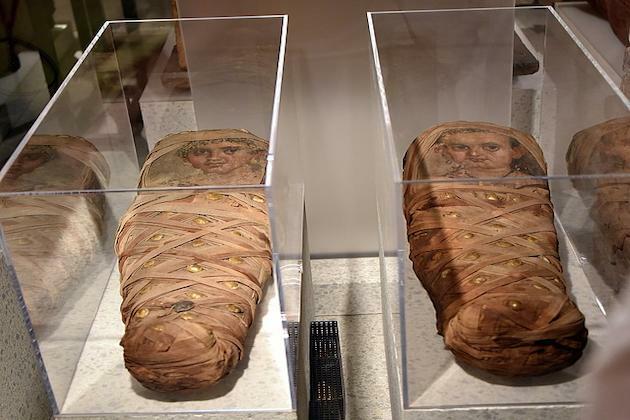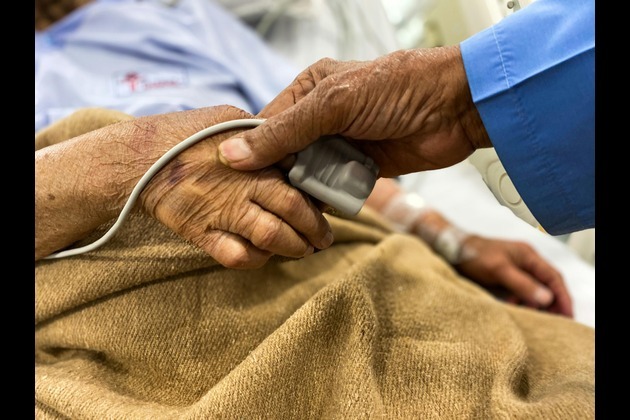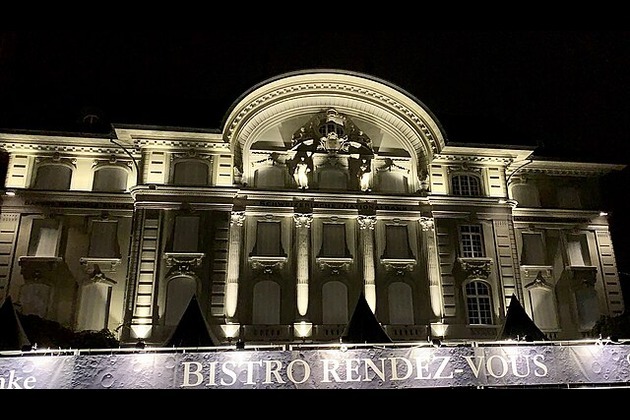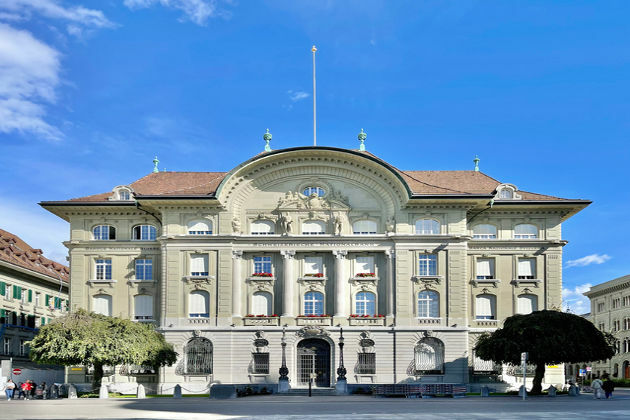Origins of mystery mummies found in China desert revealed
Robert Besser
02 Nov 2021, 13:41 GMT+10

- The ancestry of hundreds of mummified bodies buried in boats in an inhospitable desert region of northwest China has puzzled and divided archaeologists since their discovery
- In the 1990s, in the Tarim Basin in Xinjiang, the mummies and their clothing were discovered intact and preserved by the dry desert air, despite being up to 4,000 years old
- But a new study by Chinese, European and American researchers who analyzed the DNA of 13 mummies suggested they were not newcomers but a local group descended from an ancient ice age Asian population
XINJIANG, China: The ancestry of hundreds of mummified bodies buried in boats in an inhospitable desert region of northwest China has puzzled and divided archaeologists since their discovery.
In the 1990s, in the Tarim Basin in Xinjiang, the mummies and their clothing were discovered intact and preserved by the dry desert air, despite being up to 4,000 years old.
Their facial features and hair color, which look western, are still clearly visible, and their felted and woven wool clothing, as well as cheese, wheat and millet found in their unusual graves indicated they were long-distance herders from the West Asia steppe or migrating farmers from the mountains and desert of Central Asia.
But a new study by Chinese, European and American researchers who analyzed the DNA of 13 mummies suggested they were not newcomers but a local group descended from an ancient ice age Asian population.
An author of the study, which was published in the journal Nature on Wednesday, Christina Warinner of Harvard University, said, "The mummies have long fascinated scientists and the public alike since their original discovery. Beyond being extraordinarily preserved, they were found in a highly unusual context, and they exhibit diverse and far-flung cultural elements."
"We found strong evidence that they actually represent a highly genetically isolated local population. But in contrast to their genetic isolation, they seem to have openly embraced new ideas and technologies from their herder and farmer neighbors, while also developing unique cultural elements shared by no other groups," she added.
The study analyzed the genetic information of the oldest Tarim Basin mummies, which are 3,700 to 4,100 years old, as well as from the remains of five people from the Dzungarian Basin farther north in the Xinjiang Uyghur Autonomous Region, which are the oldest human remains found in the region, dating back between 4,800 and 5,000 years ago.
The results of the research showed the Tarim Basin mummies showed no sign of admixture, a scientific term for having children, with other contemporary ethnic groups and were direct descendants of a group that was once widespread during the ice age.
Meanwhile, the other group that came from farther North in Xinjiang were found to have mixed extensively with different Bronze Age populations in the region.
Although the region is remote now, in the Bronze Age "this was a region of incredible crossroads. There was vibrant mixing of North, South, East and West going back as far back as 5,000 years," said Michael Frachetti, professor of anthropology at Washington University in Saint Louis.
 Share
Share
 Tweet
Tweet
 Share
Share
 Flip
Flip
 Email
Email
Watch latest videos
Subscribe and Follow
Get a daily dose of Irish Sun news through our daily email, its complimentary and keeps you fully up to date with world and business news as well.
News RELEASES
Publish news of your business, community or sports group, personnel appointments, major event and more by submitting a news release to Irish Sun.
More InformationInternational
SectionTrump goes on social media to announce Israel-Iran ceaeefire
WASHINGTON DC, - U.S. President Donald Trump has claimed a ceasefire has been reached between Israel and Iran. He made the claim on...
Confused bot named Alyssia replaces human response on Iranian phones
DUBAI, U.A.E.: British Iranians living in the U.K. are taken aback when they try to reach their families in Tehran on the phone and...
Brazil’s ex-president accused of leading illegal spy operation
BRASILIA, Brazil: Former Brazilian President Jair Bolsonaro is accused of playing a key role in an illegal surveillance operation orchestrated...
Critics say Özdağ case aims to silence Erdogan opponents
ANKARA, Turkey: A Turkish far-right politician went on trial Wednesday, facing charges of inciting public hatred—an episode critics...
Assisted dying bill clears key hurdle in UK Parliament
LONDON, U.K.: In a landmark moment for Britain, lawmakers in the House of Commons have voted in favour of legalising assisted dying,...
International law no longer a priority among Western leaders
Western support for Israel's right to strike Iran backs up a pattern of pre-emptive violence that critics say is further eroding international...
Europe
SectionDublin Airport given two years to fix passenger limit breach
DUBLIN, Ireland: Dublin Airport has received a warning for going over its allowed number of passengers. As part of a rule set by...
Critics say Özdağ case aims to silence Erdogan opponents
ANKARA, Turkey: A Turkish far-right politician went on trial Wednesday, facing charges of inciting public hatred—an episode critics...
Europe eases rates as Fed holds and Trump threatens tariffs
ZURICH, Switzerland: A wave of central banks across Europe surprised markets last week by lowering interest rates, responding to easing...
Swiss National Bank responds to strong franc and US trade doubts
ZURICH, Switzerland: The Swiss National Bank (SNB) lowered its key interest rate to zero percent on June 19 to respond to falling inflation,...
The Hague faces lockdown for global leaders' meet
THE HAGUE, Netherlands: The city that prides itself on being a beacon of peace and justice—home to institutions like the International...
Senator Duffy lauds proposed laws against vaping in Ireland
DUBLIN, Ireland: Fine Gael Senator Mark Duffy says new laws to regulate vaping products will help make them less attractive to young...












